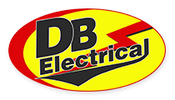The Great Debate: OEM versus Aftermarket Parts
Oh no! Your car’s warning system alerts you to an electrical system failure. Soon after, your radio, headlights and turn signals flicker a few times before shutting off. It’s the telltale sign of an alternator gone bad. Or picture yourself getting ready for a day of fun in the sun on your boat, only to find the motor won’t turn over because the starter has died. Or envision yourself on the trails riding your ATV but experiencing some choppy engine performance because your voltage regulator is malfunctioning. When the critical electrical components in your vehicle fail, you’re in the market for a replacement part.
Before you actually buy a new part, you’ll be confronted with a decision. You can buy an OEM part sold by the company that manufactured your vehicle, or you can purchase an aftermarkets part sold from another supplier. Everyone replacing parts in vehicles is confronted with that decision. There are many thoughts, opinions and misconceptions circulating about which choice is best. Here at DB Electrical we want to help you make an informed decision. Look at the facts regarding OEM versus aftermarket products.
What’s the Difference Between OEM and Aftermarket Parts?
Just to make sure everyone is on the same page, let’s define the terms. OEM stands for original equipment manufacturer, which means it’s a part sold through the distribution channels of the company that manufactured your tractor or vehicle. An OEM part is generally labeled with the original manufacturer’s name or a subsidiary of the company. On the other hand, an aftermarket part is one that is manufactured and distributed by another company other than the original manufacturer. Yet even with a different manufacturer, the part fits and performs exactly as the original one.
You might think to yourself: Wouldn’t it be wise to get a replacement part actually made by the original manufacturer? But that’s one of the most widespread misconceptions. Even with OEM companies, many parts are sourced from other manufacturers with the expertise and engineering resources to do it better. It makes perfect sense. No one company can do everything, so they rely on others with specialized knowledge. Depending on the product in question, some OEM products may come off the same assembly line as aftermarket counterparts.
Why Are Some People So Loyal to OEM?
OEM products are high quality, but many aftermarket products offer just as good fit and performance. However, original equipment manufacturers invest a lot of money in marketing their products and have a network of dealerships that are committed to using them. OEMs work hard to promote a perception of superiority for their products because replacement parts are a lucrative source of revenue for them. Some people even try to perpetuate a myth that using aftermarket parts will void your vehicle warranty, but that is generally untrue.
What’s the Case for Aftermarket Products?
The biggest benefit of aftermarket products is that they often cost less than OEM versions, sometimes significantly less. At DB Electrical, some aftermarket products sell for up to 50% less than OEM ones. Savings, of course, brings up the question of quality. Afterall, buying a replacement part is no bargain if it doesn’t fit or work as well. That’s why DB Electrical engineers its products to meet or exceed OEM standards. With many OEM products, you’re simply paying more for the name. Others agree that aftermarket replacement parts are high quality. Many independent repair shops rely heavily on aftermarket products for value and performance. Independent shops must turn out quality work at a competitive price or they will soon be out of business. Mechanics are good judges of quality, and aftermarket products pass the test.Are Aftermarket Products All the Same?
No, product quality can vary significantly. DB Electrical, for instance, has engineers who work directly with factories. Products go through a rigorous engineering and quality control process. These products meet or exceed OEM standards, making them reliable performers in your tractor.
Unfortunately, many sellers who simply liquidate inventories have emerged on the internet. Think of the guy who’s selling merchandise out of his garage through a do-it-yourself website. That kind of seller really exists. The trouble with these sellers is that they really don’t know the products, try to move inventory of questionable quality and may not be in business very long. They often buy excess inventory with the sole intention of getting rid of it and moving on to something else.
How Can Buyers Find Quality Aftermarket Products?
Don’t miss out on the value of buying aftermarket products. Just make sure you’re following these common-sense steps to protect yourself. Here are a few ways to help make sure you’re buying reliable quality from a reputable seller.
Physical address: Even with ecommerce, you should only do business with companies that have a physical address. Be wary of sellers who only list a P.O. box.
Geography: Ask where the seller you’re buying from is doing business. DB Electrical sells from America’s heartland and quality checks every product sold. Be cautious about overseas factories trying to sell you products directly. They don’t have the same quality-control practices in place.
Business longevity: Find out if a business has a track record of success as a seller. If a business keeps customers satisfied, it indicates reliability. It also indicates the seller will be around in the future if you need customer support.
Warranty: If a seller believes in its products, it should be willing to back up every sale with a warranty that protects the consumer.
Your Choice: OEM or Aftermarket
Ultimately, the choice to buy OEM or aftermarket parts rests with you. Just know that thousands of people choose the aftermarket option every day. They receive a reliable replacement part at a lower price than many OEM parts. Aftermarket parts are helping drive vehicles across the world every day.


